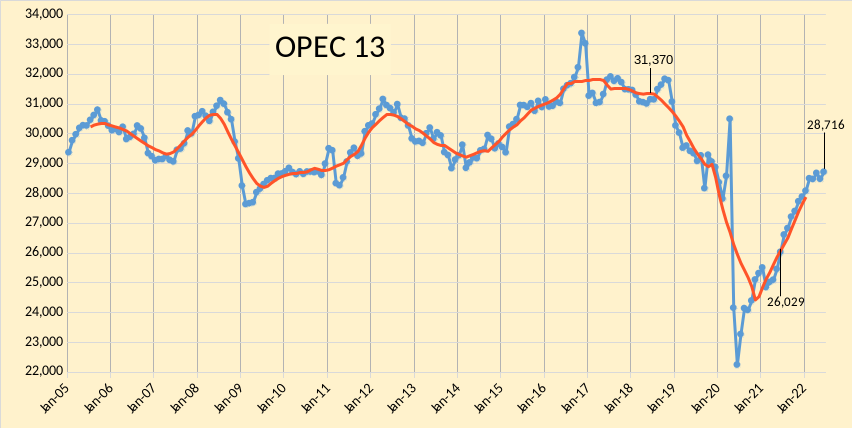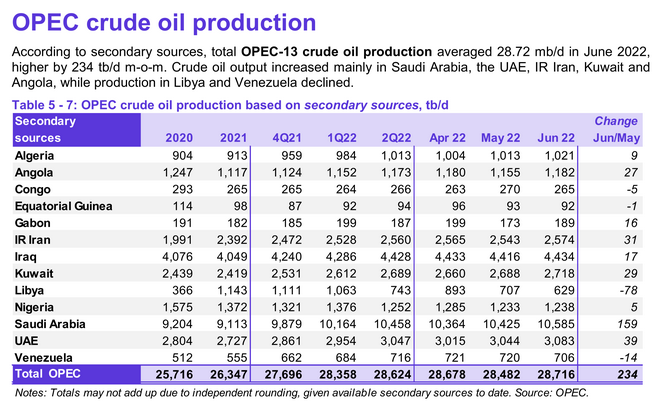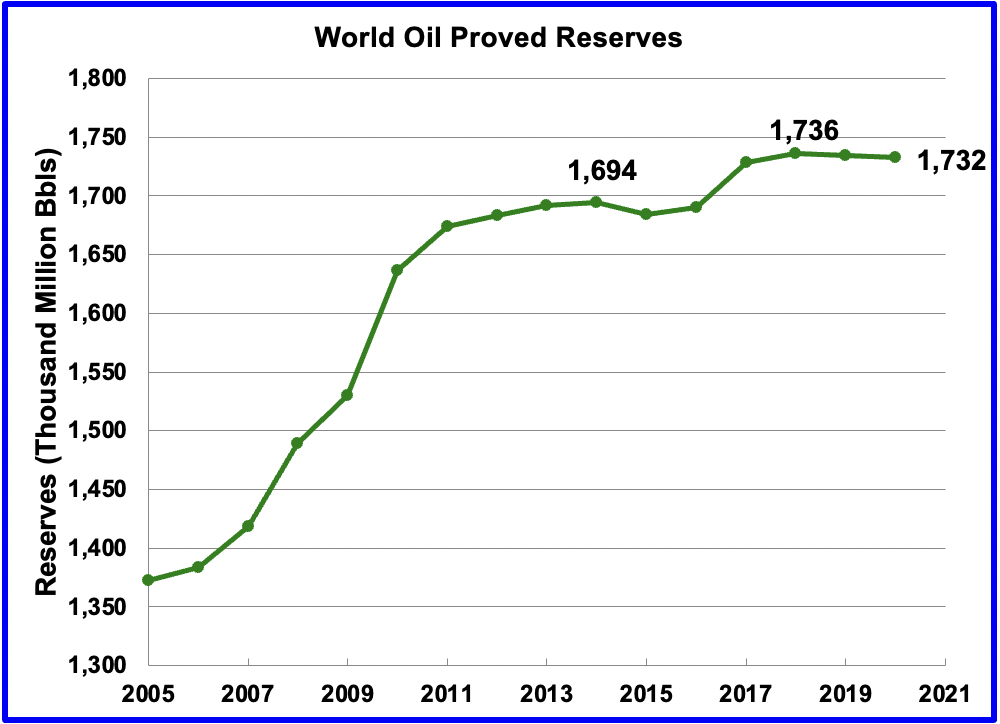Comments not related to Oil and/or natural gas production in this thread please. Thanks.
Read MoreCategory: Uncategorized
OPEC Update, July 2022
The OPEC Monthly Oil Market Report (MOMR) for July 2022 was published recently. The last month reported in most of the OPEC charts that follow is June 2022 and output reported for OPEC nations is crude oil output in thousands of barrels per day (kb/d). In most of the OPEC charts that follow the blue line is monthly output and the red line is the centered twelve month average (CTMA) output.


North Dakota Sinks US April Oil Production
A guest post by Ovi
All of the oil (C + C) production data for the US state charts comes from the EIAʼs Petroleum Supply monthly PSM.

U.S. April production decreased by 60 kb/d to 11,628 kb/d, after March was revised up from 11,655 kb/d to 11,688 kb/d. The largest production increase came from the GOM while North Dakota dropped by 214 kb/d.
Read MoreOpen Thread Non-Petroleum
Comments not related to oil or natural gas production in this thread please. Thanks.
Read MoreCan Past Oil Production Predict the Future?
A guest post by Ovi
The EIA has reported that their site experienced technical problems last week and that they have not been able to update their weekly and monthly data. Since we do not know when they will publish the April U.S. oil production report, this short different post will fill the gap.
The answer to the above question is clearly No. However that does not prohibit one from doing some exploratory analysis.

Recently BP issued their annual Statistical Review. While most of it was updated to 2021, the world oil reserves were not and the same 2020 reserves were reported again. The following note was provided to explain why the reserves were not updated: “Please note that due to process improvements for the Statistical Review these reserves tables have not been updated this year.”
Read More